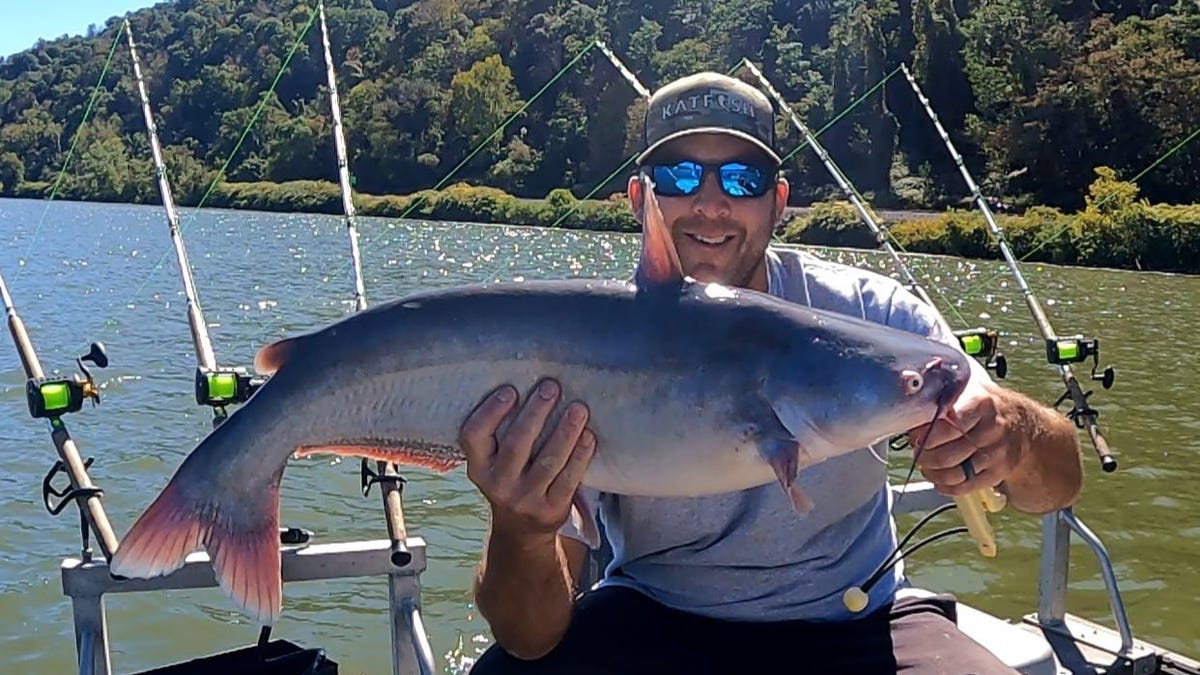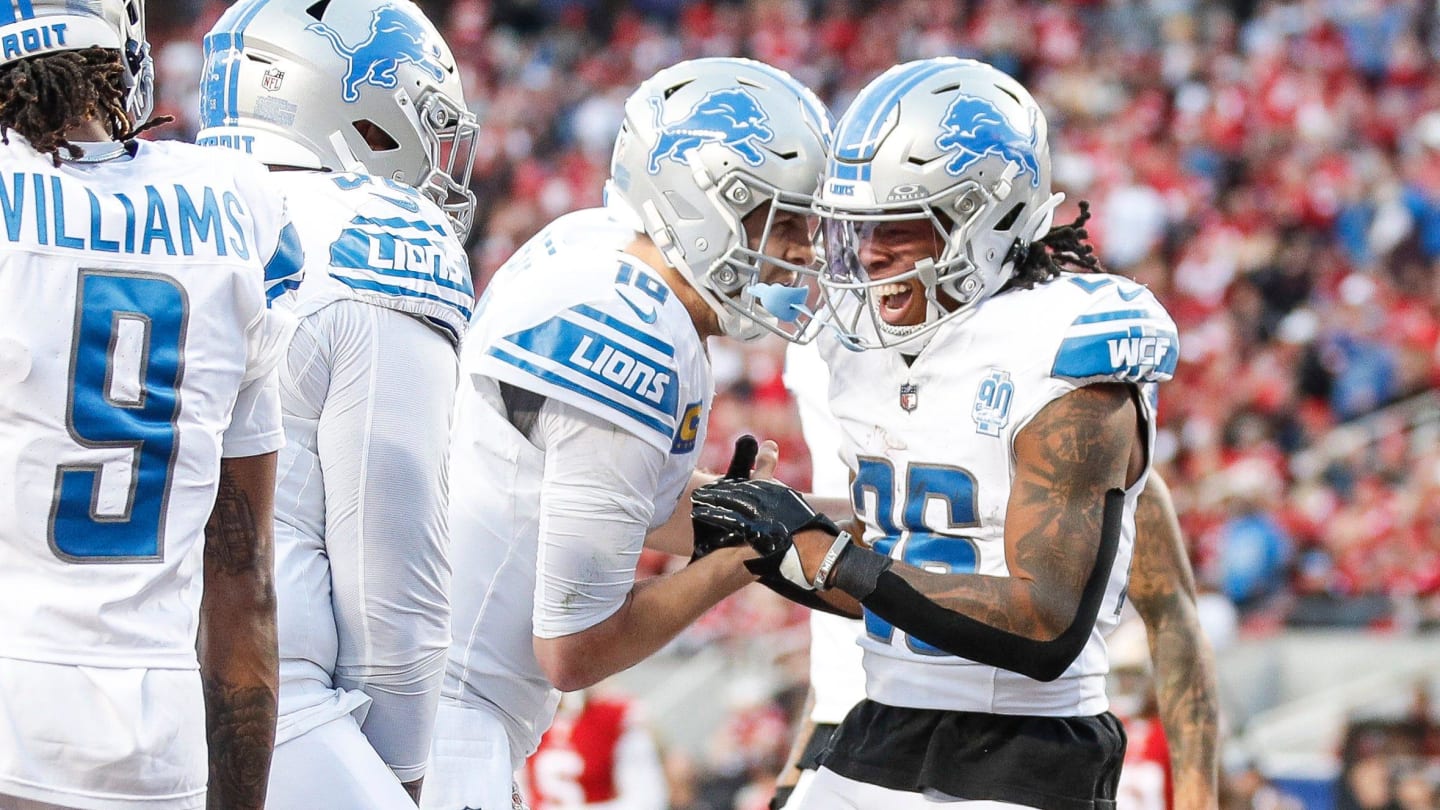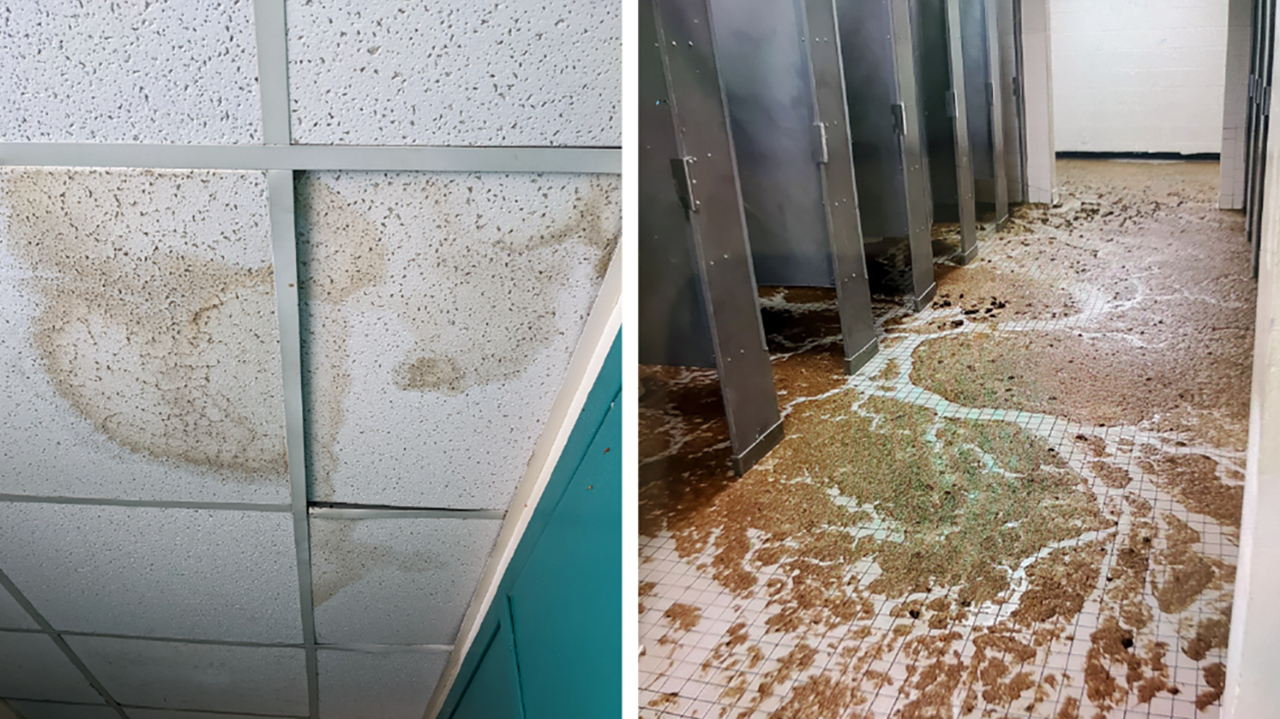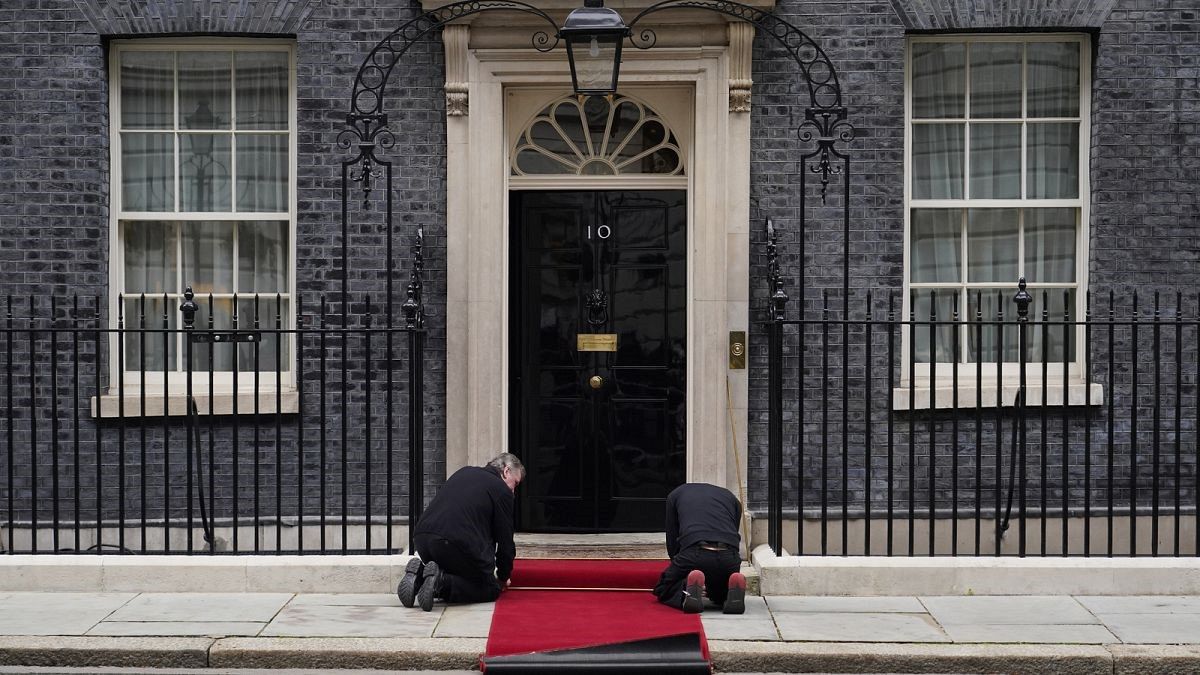West Virginia
Man returns to West Virginia after successfully thru hiking major US trails, completing the ‘Triple Crown’
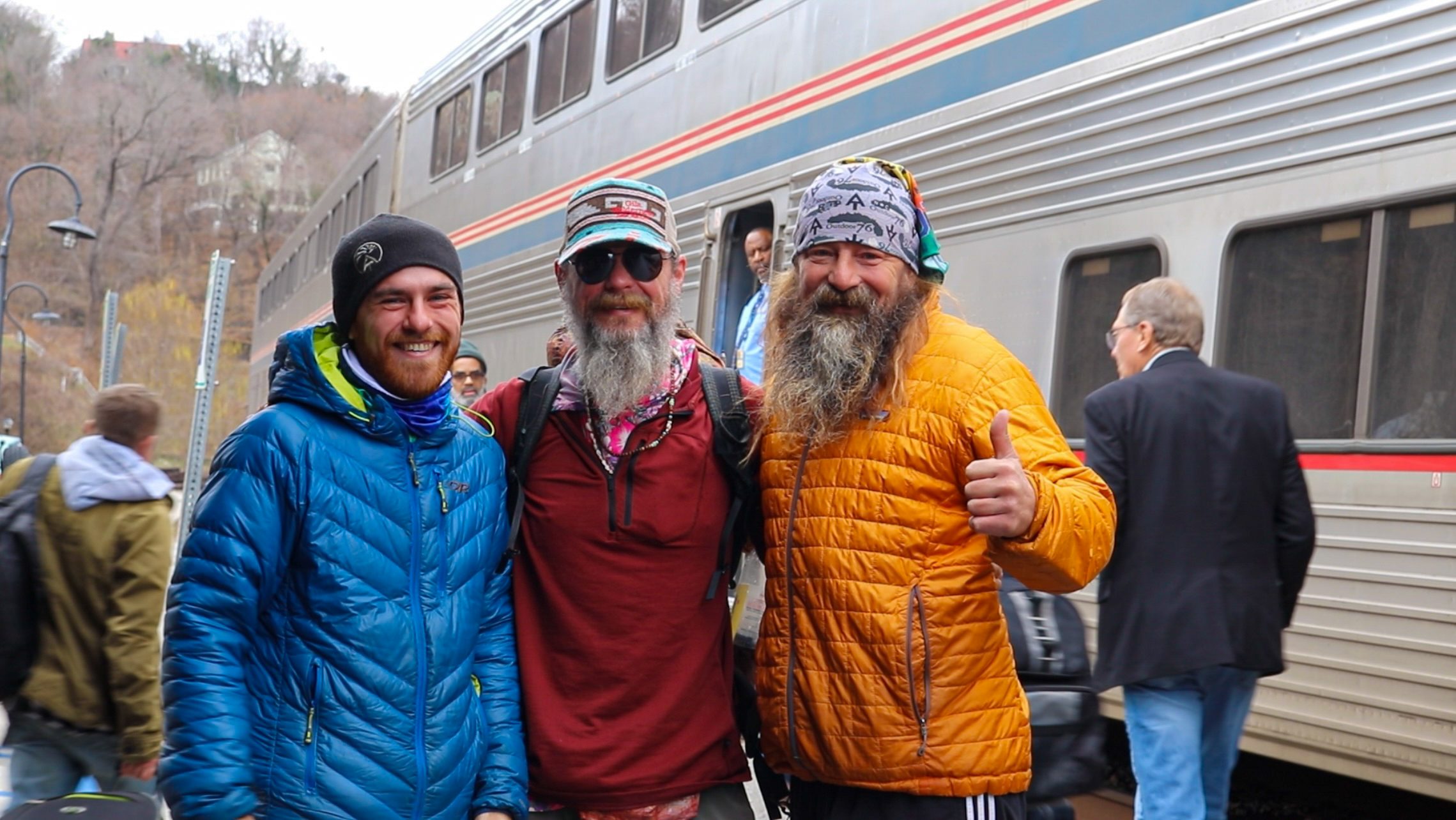
HARPERS FERRY, WV (LOOTPRESS) – After successfully thru hiking three major U.S. trails, Chris Lovell has returned to the Mountain State.
Lovell returned to Harpers Ferry in Jefferson County via Amtrak on Thursday and was greeted by friends who were eager to congratulate him on his impressive feat.
The feat is called the ‘Triple Crown’ which informally refers to the three major U.S. long-distance hiking trails. Those trails are the Appalachian Trail (2,194 miles), the Pacific Crest Trail (2,653 miles), and the Continental Divide Trail (3,028 miles).
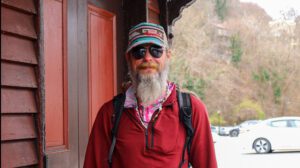
“It’s about 7,800 miles altogether,” Lovell told LOOTPRESS. “I’m just getting home to Harpers Ferry, seeing my friends, getting back to the hostel; can’t wait to see you hikers next year.”
Each trail takes an estimated 4-6 months to complete.
Lovell also recently purchased the Harpers Ferry Hostel located across the river from the historic town and encourages visitors to the area to book a stay.
“All you hikers coming through, whether you’re section hikers, weekendin’, even if you’re just doing a day hike and wanna come and see us,” Lovell explained. “We are looking forward to seeing y’all, we’re pet friendly, bring any hiker out.”
To learn more about the Harpers Ferry Hostel, click here.

West Virginia
New support group at WVU aims to help parents awaiting autism evaluation, services • West Virginia Watch

West Virginia parents may face long waiting periods to get their child services for autism, or even to see a provider for an evaluation. A new support and education group at West Virginia University aims to help them in the meantime.
The WVU Center for Excellence in Disabilities is starting Mind the Gap in August. The group will be facilitated by Dr. Amy Kurowski-Burt, an occupational therapist and Heather Merritt, the center’s positive behavior support curriculum developer.
Burt said the idea for the program came about working with families at the center, noticing that parents can wait sometimes two to three years for an autism diagnosis or to get services for autism.
“Research tells us that early intervention is the most effective for really any pediatric diagnosis,” Kurowski-Burt said. “The sooner you get to it the better they will be long-term through teenage years and adulthood.”
The group will focus on supporting and teaching parents what they can do for their children while they’re waiting for evaluations and services like therapy or an individualized education plan for school, Kurowski-Burt said.
“It’s not just the therapist, it’s people who are with them all the time that can make the difference,” she said. “So that’s the parents, the siblings, the grandparents, the neighbors. So what information can we give them to help their child be the best they can be.”

Merritt and Kurowski-Burt did a survey and got more than 150 responses from parents about what topics they’re interested in learning about through the group.
“Across all age groups, we found parents all want the same type of information, and need the same type of support,” Merritt said. “And so, we took that coupled with the nationwide Mind the Gap curriculum and kind of just developed the plan to support families the best that we can here.”
According to the Centers for Disease Control and Prevention, an average of one in every 36 children has been identified with autism spectrum disorder. The disorder is characterized by ongoing social problems including difficulty communicating with others and repetitive behaviors as well as limited interests or activities. Symptoms typically are recognized by the time the child is two.
Due to a nationwide shortage of providers such as psychologists, psychiatrists and developmental pediatricians, parents can wait two or three years just to have their child evaluated for autism, Burt said.
Many parents are interested in learning what autism is and what it means for their child, along with how to get the child ready for school and what behaviors to expect.
“I’ve run a similar group like this in the past at a previous agency I was at, and I have found that the support alone, parent to parent or caregiver to caregiver is so valuable, because what may work at somebody’s house, somebody else might not know,” Merritt said. “And so when they share those ideas it carries on within the community, and so they can lean on each other not only for support, but also with ideas of how to help their child.
Kurowski-Burt said she’s excited to support families who are falling into a “gap” for services and to empower people with disabilities not to wait for a provider.
“If we give these families strategies of things that they can do in their home or community that’s going to make a difference,” she said. “It doesn’t necessarily have to be someone who’s specialized – they can do stuff too. Providers also are awesome, but families don’t have to wait for someone to tell them what to do.”
Mind the Gap will meet from 6 to 7:30 p.m. each first Wednesday of the month beginning in August. Participants can attend in person at the center in Morgantown or virtually.
The support and education group is free to attend, but registration is required. To register, visit https://cedwvu.wufoo.com/forms/mind-the-gap-parent-education-and-support-group/
West Virginia
West Virginia state park has July 4 history, too – Dominion Post

In Pocahontas County on this day 95 years ago, Droop Mountain Battlefield State Park was dedicated.
Which was an appropriate date, as many will say.
That’s because the intense, 1863 skirmish for which the park is named was also West Virginia’s Revolutionary War, of sorts.
Even with West Virginia entering the Union that June, the Confederacy still maintained a strong military presence within the new, squiggly borders of the only state in the U.S. born of the Civil War.
The ink was barely dry on West Virginia’s statehood papers when everything spilled over the cold morning of Nov. 6.
Some 5,000 soldiers in blue uniforms dug in at the summit of Droop Mountain against 1,700 soldiers wearing gray. The town of Lewisburg and the Virginia-Tennessee railroad line were both at stake.
The first shots were fired at 11 a.m. — and by 1:45 p.m., the enemies were staring one another dead in the face.
Brutal, hand-to-hand fighting ensued.
By 3 p.m., the Confederate troops began pulling back, reporting that were being overrun by the soldiers from the Union.
An hour later, they were in full retreat. It was over. Some 275 soldiers in gray were dead on the battlefield, according to estimates. Another 119 Union soldiers were casualties of war.
Southern forces never took a stab at the new West Virginia after that.
“Well, they were tenacious, for sure,” author and archivist Stan B. Cohen said by telephone, two days before the Fourth of July, from his home in Montana.
“I always saw that as kind of a West Virginia thing,” the longtime Missoula resident said.
It was a mostly sunny day on July 4, 1929, when Droop Mountain became the first state park in West Virginia.
According to newspaper accounts, as many as 10,000 poured into the place, to see the handiwork of it all.
There were speeches and proclamations. More poignantly, a handful of elderly Civil War veterans on both sides of the fighting were there to shake hands.
The logo — and the Last Frontier
Missoula is where Cohen, a Charleston native and WVU graduate, started making his name.
He enjoys taking in all that Big Sky and the western range of the Rockies he can regard from his window, but if you ask him – he’ll still proudly proclaim his Mountain State pedigree.
“Everybody out here knows I’m from there,” he said.
“I was talking about Jerry West with a guy at my bank just now. I tell everyone I’m a West Virginian who just happens to live in Montana.”
Cohen earned a geology degree in 1960 from WVU.
As an undergrad, he thrilled to the basketball conquests of the aforementioned West, a cool, steely counterpart to Hot Rod Hundley, who paired his own prowess in the game with glorious clowning and comedic flair.
It was a good time to be a fan of WVU’s basketball Mountaineers, he said.
People would pack the now-gone Stansbury Field House on Beechurst Avenue, where the seats went right down to the court.
Dust would rain from the rafters when fans would stomp their feet in appreciation. (So too would colorful language and creative insults, when they weren’t pleased).
Cohen was born in the Mountain State’s capital city in 1938, a son of Benjamin Franklin Cohen and Ruth Lieberman Cohen.
He worked in the oil and gas industry here briefly after WVU, before opportunities in the U.S. Forest Service took him to Montana and Alaska.
The West Virginian has been a small business owner and publishing house founder and proprietor.
His 1976 book, “A Pictorial Guide to West Virginia’s Civil War Sites,” carries the imprint of his Pictorial Histories Publishing Co., in his Charleston hometown. He later sold the business to a friend.
Out west, he’s primarily regarded as a writer and historian.
“I might be a little more known in Alaska than I am in Montana,” he said.
He’s penned more than 70 books on everything from wildlife to military history, while publishing close to 400.
He’s authored at least 15 books on America’s Last Frontier and is a recipient of the state’s Alaska History Award.
At 86, he has no plans of slowing down, as he’s currently writing a historical study of America’s monorail and alternate transportation systems — “I’m guessing the PRT is still going in Morgantown?” he asked.
Wars are just as much about real estate as they are ideologies, and the Mountain State is a revolution of place regarding both, Cohen said.
It’s home.
“I haven’t been back to West Virginia in six years. And that’s starting to bug me.”
West Virginia
DNR dive and rescue team launches in West Virginia

HINTON, W.Va. (WVVA) – After several years of preparation, the division of natural resources have launched their dive and rescue team for the state of West Virginia.
“Today we’ve unveiled our dive team. This is a statewide effort that’s been going on for some time. It’s taken an immense amount of training and gathering of equipment and putting together policy and all the departmental stuff,” said JB Smith. “So, we just kind of unveiled it. These guys have been in the works for several months or years now, honestly, and we’re just kind of getting ready to show it off to the state.”
Governor Jim Justice is excited to have this new resource available for the state. The governor says he believes with these safety measures in place more people will flock to the mountain state and continue to drive up tourism, which has played a factor in allowing this launch to happen.
“We didn’t have the money. You know, now we do. We’re flourishing in every category tourism, license sales and fishing and hunting, all the different things that are going on. We’re flourishing in this state and therefore we have the money and that’s why we’re how we’re able to do this,” said Justice.
The environment, as well as what is being recovered, dictates what the diver will be equipped with, and what steps need to be taken. Safety precautions between officers in the water and those who are assuring their safety from above, include things like having radios and hand signals to always guarantee safety.
Training to become a certified diver is not an easy task, including everything from swimming tests to learning how to navigate with your hands in sometimes eight inches of visibility. One diver talks about the eerie feeling of being underwater while barely being able to see.
“When you’re searching for something, sometimes you can’t see it. It’s all about feeling and you’ve got to get on top of it,” said Zachary Mills. “So, once you feel it, then you have to try to put your eyes on it, which is very difficult, but our underwater lights do help a little bit. It’s just very eerie feeling when you have to rely on your sense of feel versus see”
With great honor these divers carry the responsibility of being side by side with individuals in their time of need.
Copyright 2024 WVVA. All rights reserved.
-
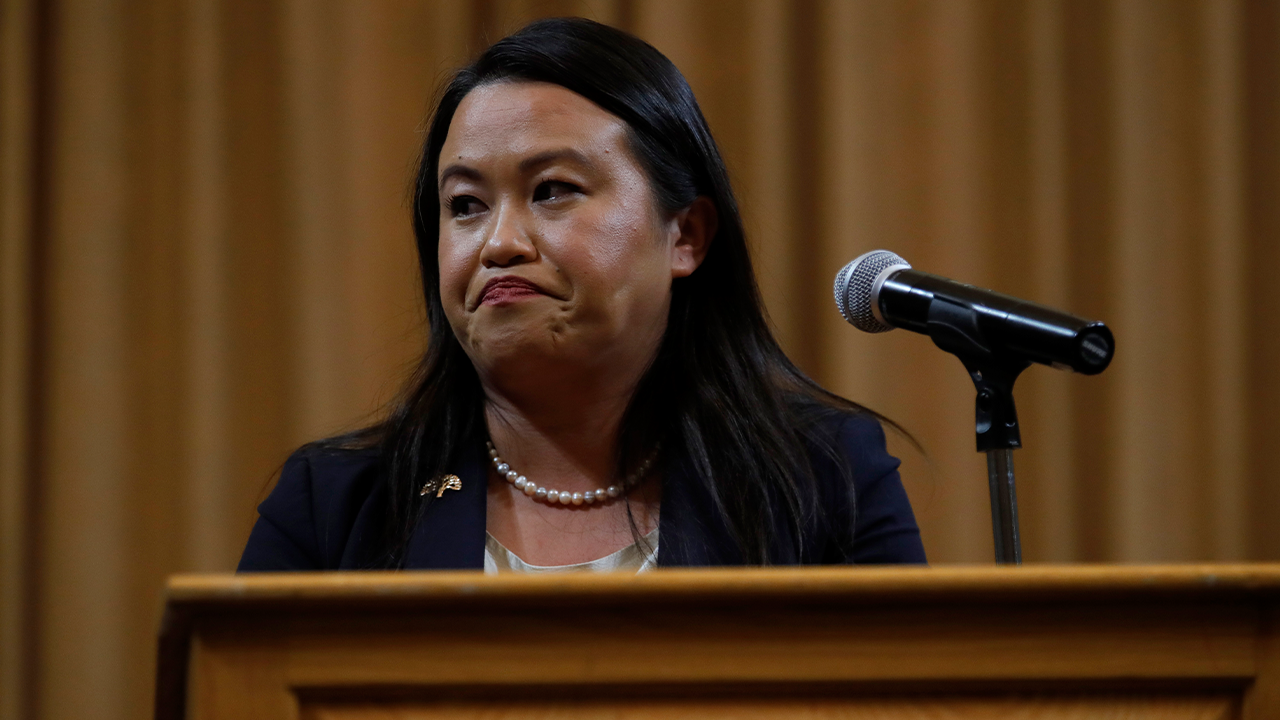
 Politics1 week ago
Politics1 week agoOakland mayor breaks silence after FBI raid: ‘I have done nothing wrong’
-

 News1 week ago
News1 week agoWhere Joe Biden and Donald Trump Stand on the Issues
-

 Politics1 week ago
Politics1 week agoPopular Republican and Trump running mate contender makes first Senate endorsement in 2024 races
-

 News1 week ago
News1 week agoToplines: June 2024 Times/Siena Poll of Registered Voters Nationwide
-

 Politics1 week ago
Politics1 week agoFox News Politics: Trump Ungagged…Kinda
-
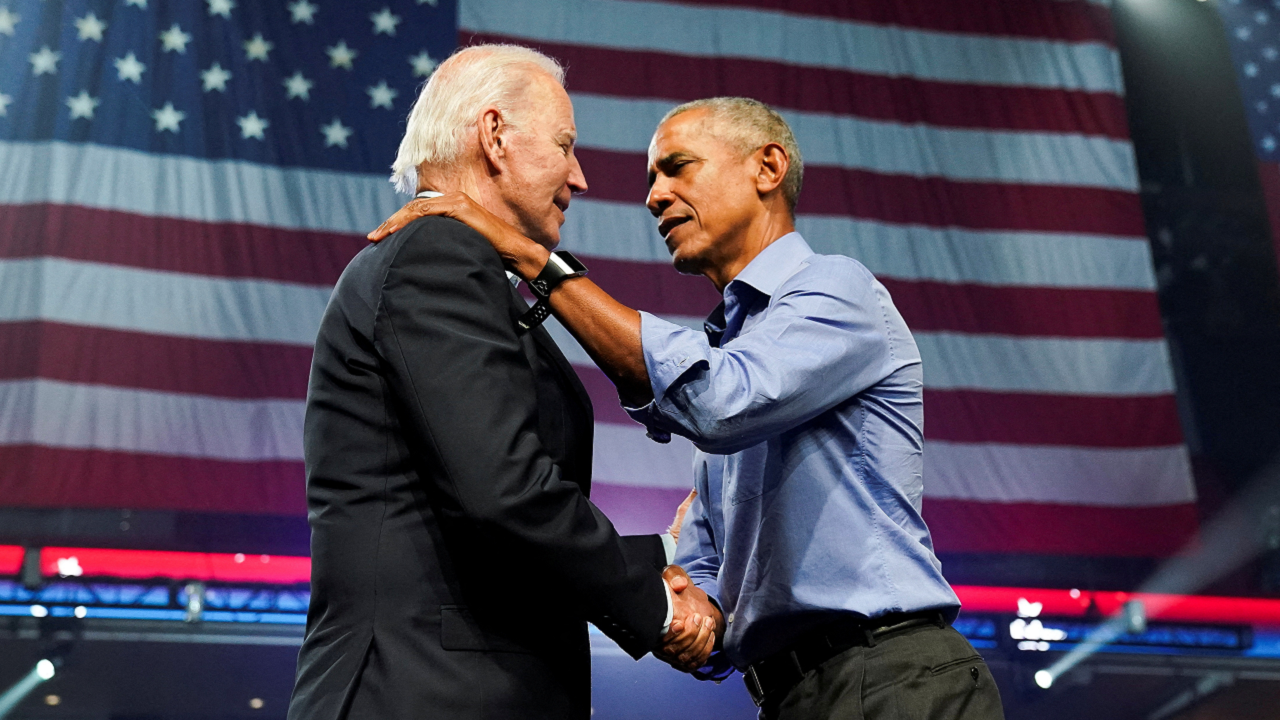
 Politics1 week ago
Politics1 week agoObama again stepping into role as Joe's closer ahead of Trump v Biden rematch
-

 News1 week ago
News1 week agoIowa floodwaters breach levees as even more rain dumps onto parts of the Midwest
-

 News4 days ago
News4 days agoVideo: How Blast Waves Can Injure the Brain

